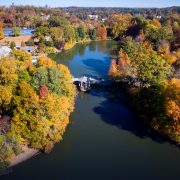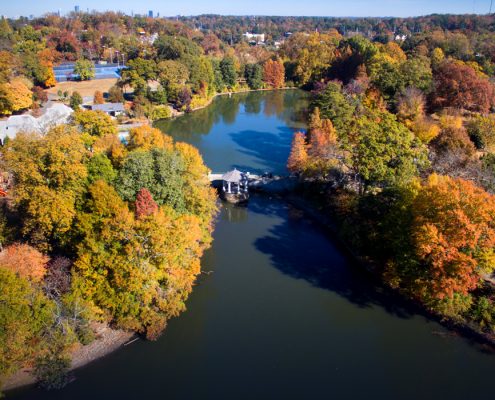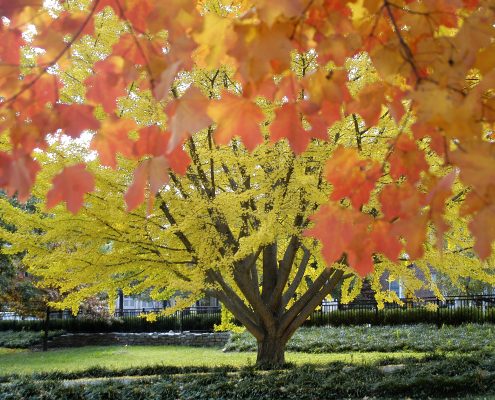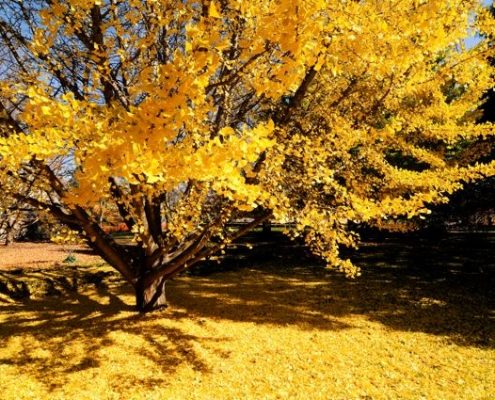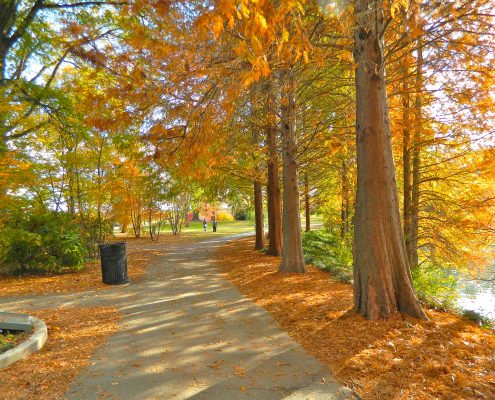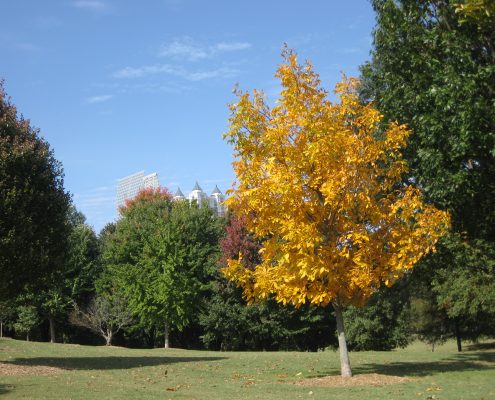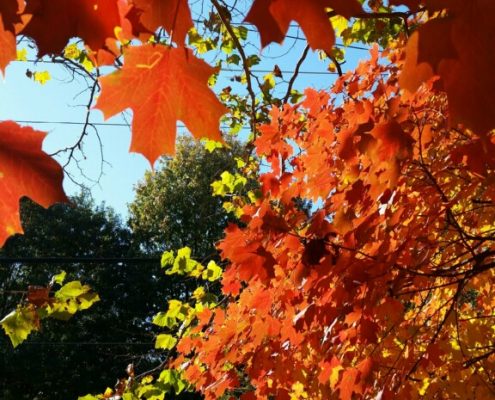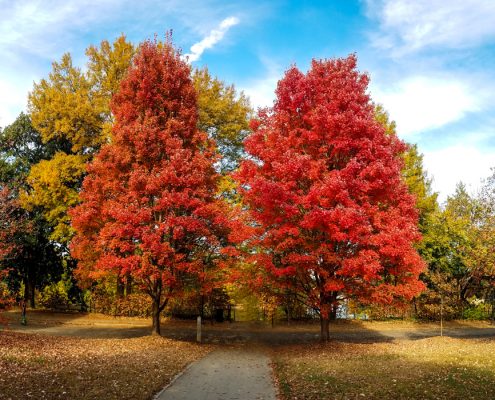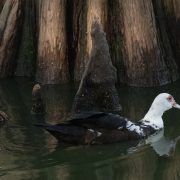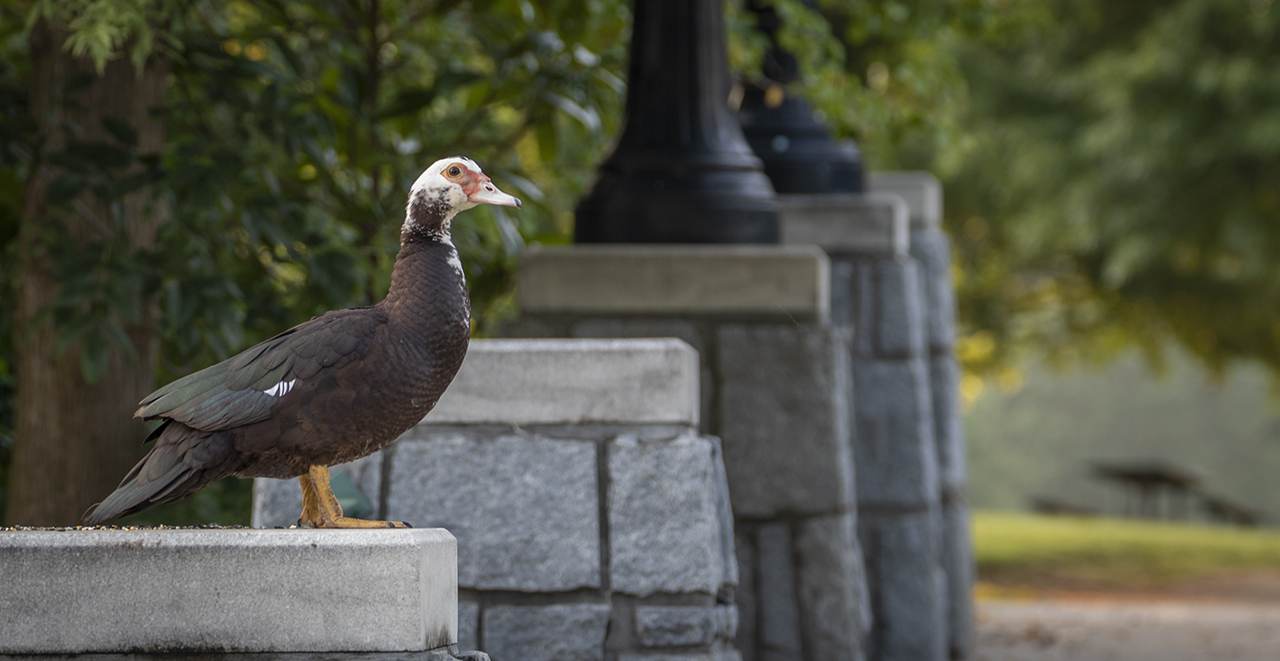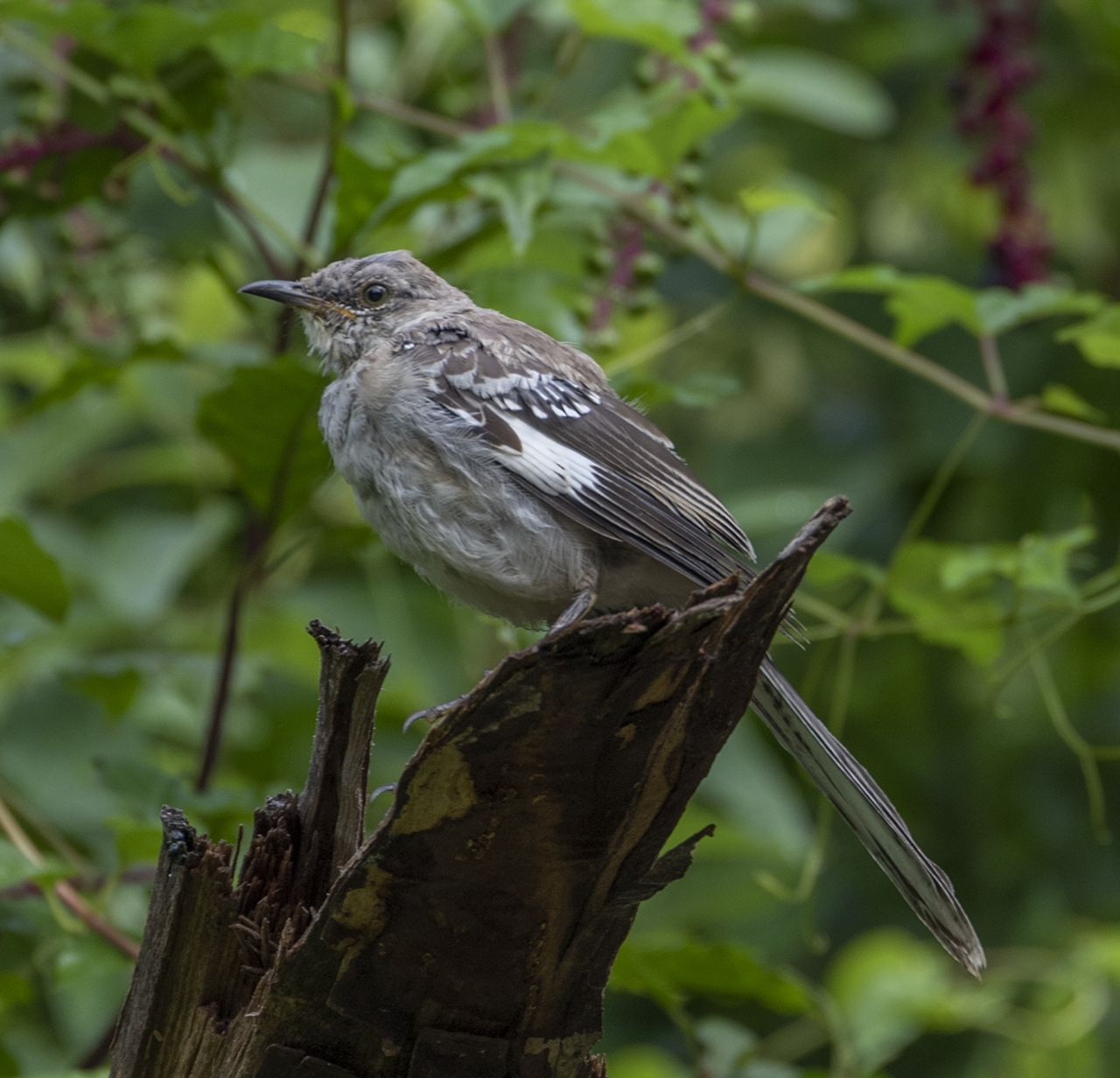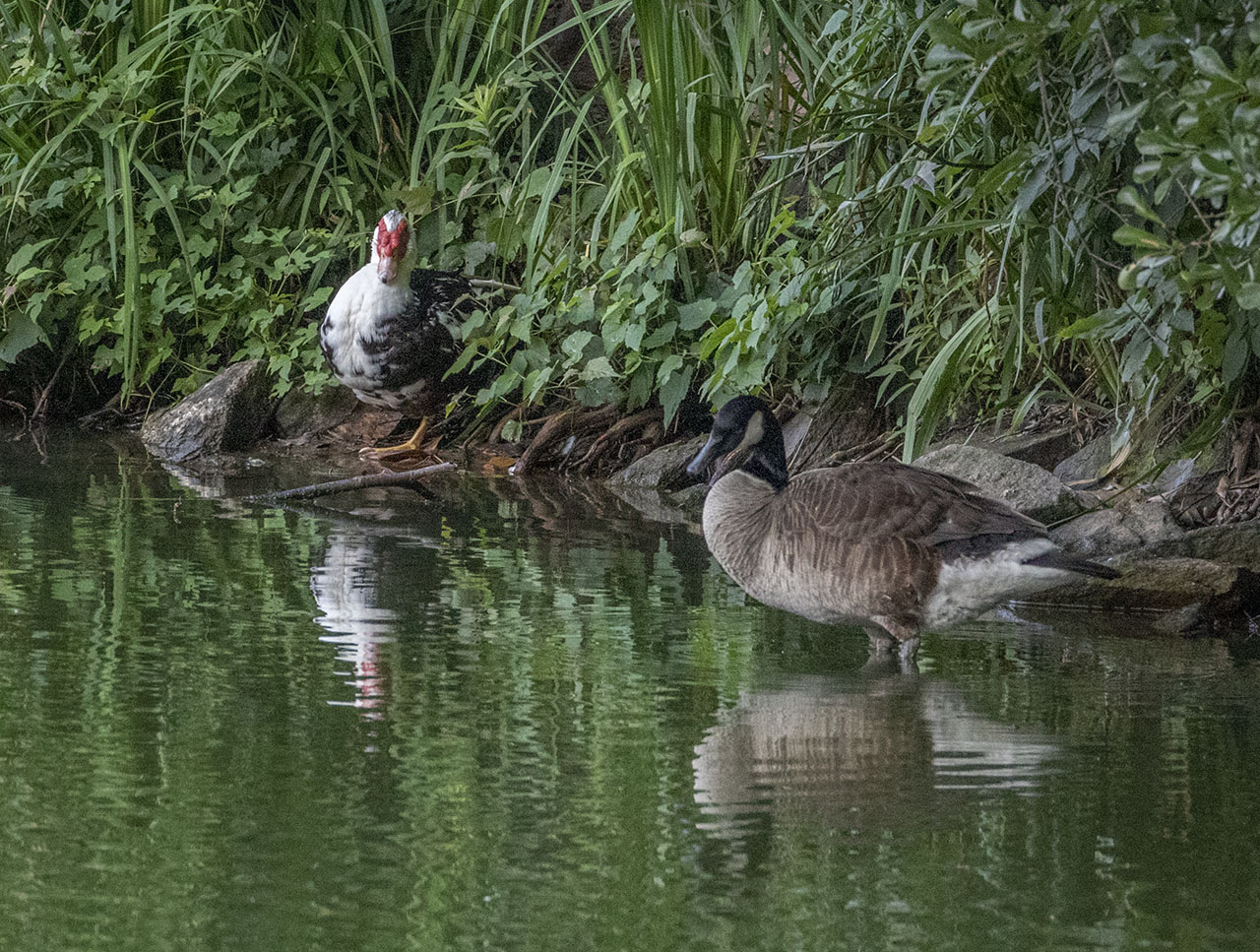Four Best Spots to See Fall Leaves in Piedmont Park
Each year, September 22 marks the first day of autumn which is the also the first day we start obsessing over fall foliage in Piedmont Park. A predominately green park slowly sprouts spots of yellow, orange dark purples and bold reds. By the end of October, we get antsy about catching peak leaf season which can happen at any time into early November. The Park becomes more gorgeous than you thought was possible, and fall photos can be seen in every direction.
Come visit, and be sure to stop by the Piedmont Park Conservancy’s top four recommended places to see fall foliage in Piedmont Park!
14th Street Gingko Trees
Near the Piedmont Driving Club, the adjacent area is called the Front Lawn. Near the gate, you can spot some large gingko trees that will peak a bright yellow. On a nice day, the sun will shine on the trees and create a lovely yellow glow on the ground.
Many tree enthusiasts and Park lovers look forward to this short-lived beauty. If you want to snag a photograph like the one below, you must pay close attention to the leaves changing! These gingko trees will only peak for a few days before the leaves all fall off.
Park Drive Bridge Fall Leaves
Above the Dog Parks and by the Meadow, Park Drive bridge is another favorite location for peak leaf season.
Look near the water to spot bald cypress, Dawn redwoods and more. The trees will create a beautiful skirt around Lake Clara Meer that makes for fantastic photographs.
Nearby, you will also see a Pignut Hickory that turns a vibrant yellow as well as several other trees that vary in color along the path.
Wide Open Views on Oak Hill
Oak Hill’s linear space offers visitors a wide view of beautiful oaks parallel to 10th Street. Stand on top of one of the hills and you can see gorgeous views and adjacent trees boasting vibrant colors along Piedmont Park and the Atlanta skyline.
Path Between Mayor’s Grove Playground and the Active Oval
Coming around the south end of Lake Clara Meer, you will find yourself on a pathway between a children’s playground and the athletic fields: Mayor’s Grove Playground and Active Oval. On a walk during peak leaf season, you can find a wide diversity of tree colors on both sides. Go up the stairs a bit to see the Active Oval city skyline with trees sprawling on all sides of the fields.
Enjoy Piedmont Park’s Trees this Fall
Piedmont Park is home to thousands of trees, and each fall offers a new perspective for the Park’s visitors. Pull out your cameras, grab a blanket and come see Piedmont Park’s vibrant shades of red, orange, yellow and green.
Tag us on Instagram @piedmontpark with your latest fall photos. Also, check out Piedmont Park’s virtual tree tours.

